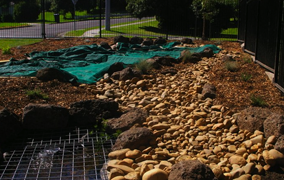While talking to the children over 'snack time', about what healthy choices they had in their snack boxes, many children pointed out the fact that they had helped Mums, Dads and Nonnas to bake healthy biscuits, muesli bars and bread. At the same time my co-educator was experiencing a similar conversation in the home corner, as children 'cooked' and prepared meals. Reflecting on these experiences after the session, we decided to extend this interest in cooking, including adding Cheese & Vegemite pinwheels into the program.
 S
Small groups of children washed their hands and sat at the table listening intently as the experience was introduced.


Children were given the choice what to include in their pinwheels, then began spreading butter or Vegemite on the pastry before sprinkling the cheese on.

Not only did this support fine motor development and dexterity, but enhanced cognitive skills. Pre-mathematical concepts were again introduced (thick, thin, long, short and measuring).
Sprinkling cheese on the pastry proved too tempting for some children, who decided that they needed to 'taste test' the cheese prior to using it.
Rolling the pinwheel again used many of the children's skills as they manipulated the pastry, trying to keep everything inside.
We introduced the concept of time into the program as children anxiously waited to see their pinwheels cooked and then wait long enough for them to cool so they could be eaten.
This was such a successful experience, I cant wait to add other cooking experiences into the program.




















































